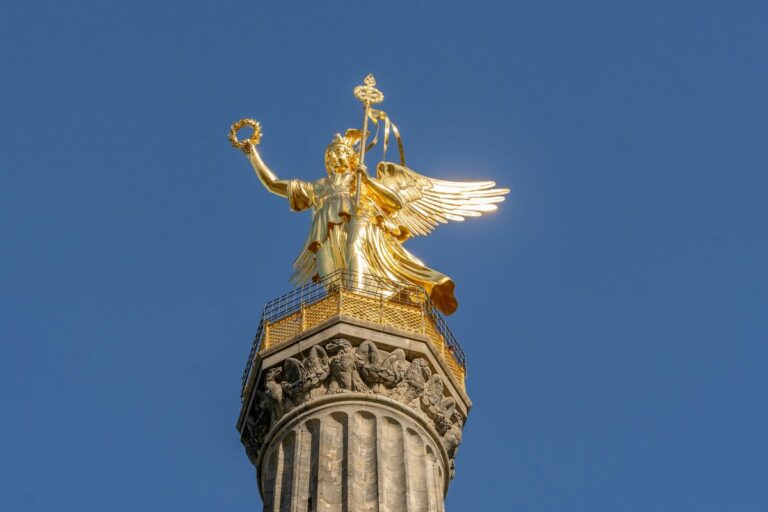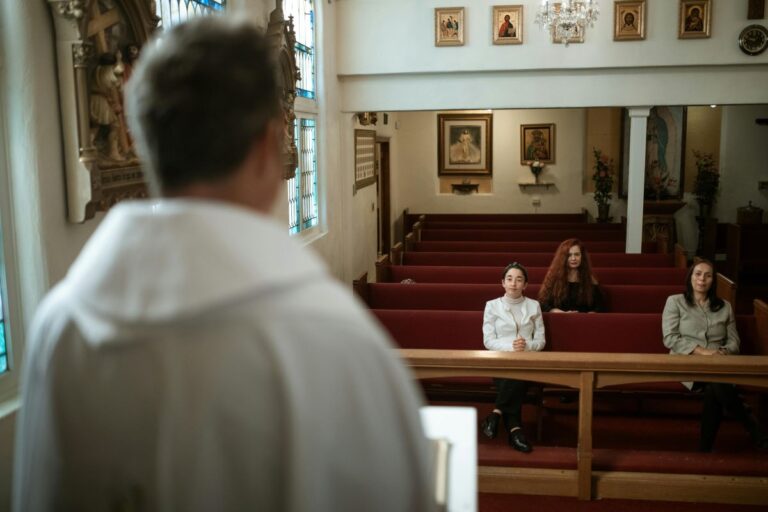Religious Dress Codes Across America: What’s the Deal?
Religious dress codes are a visible aspect of faith, but they can vary widely. Here’s a look at different religious dress practices across America:
Embracing Modesty

Many faiths, including Islam and Orthodox Judaism, emphasize modest attire. This can include long skirts, head coverings, and loose-fitting clothing.
Symbolic Head Coverings

Head coverings, such as hijabs, yarmulkes, and turbans, are worn for religious reasons. They signify devotion, modesty, and cultural identity.
Wearing Faith Symbols

Wearing religious symbols, like crosses, Stars of David, and prayer beads, is a common practice. These symbols serve as a reminder of faith and commitment.
The Clerical Look

Clergy in many religions wear specific robes or vestments during services. These garments distinguish their role and signify respect and tradition.
Temple Garments Tradition

In the Church of Jesus Christ of Latter-day Saints, members wear temple garments as a symbol of their covenants and faith.
Dressing Up for Sunday

Many Christians wear their best clothes to church on Sundays, a tradition that shows respect for the worship service.
Colorful Meanings

Certain religions use specific colors in their dress. For example, saffron robes in Buddhism signify renunciation and humility.
Gender-Specific Attire

Religious dress codes often have different requirements for men and women. Understanding these differences is essential for respecting the practices.
Cultural Dress Influences

Cultural influences play a significant role in religious dress. What is worn in one country may differ significantly from what is worn in another, even within the same faith.
School Dress Dilemmas

Religious dress in schools can be a contentious issue. Policies vary widely, and accommodations are often necessary to respect students’ religious beliefs.
Workplace Wardrobe Adjustments

Workplace dress codes must sometimes be adjusted to accommodate religious attire. Employers are increasingly aware of the need for inclusivity.
Holiday Dress Codes

Special religious holidays often come with specific dress codes. These can include special garments, colors, and symbols.
Youthful Style Adaptations

Younger generations may adapt traditional religious dress to fit modern styles, creating a blend of faith and fashion.
Legal Rights and Protections

Legal protections exist to ensure people can wear religious attire without discrimination. Understanding these rights is crucial for practicing religious freedom.
Traveling with Respect

When traveling, being aware of local religious dress customs can prevent misunderstandings and show respect.
Interfaith Dress Dialogues

Interfaith dialogues often discuss dress codes to foster understanding and respect between different faiths.
Religious Fashion Trends

Some religious attire has become fashion statements, influencing mainstream clothing designs.
Media Portrayals

Media representations of religious dress can shape public perceptions, making accurate and respectful portrayals important.
Personal Dress Choices

Within religious communities, individuals may have different interpretations and practices regarding dress codes. Personal choice and interpretation play a significant role.
Educational Dress Programs

Educational programs about religious dress can promote understanding and reduce discrimination. Schools, workplaces, and community centers can benefit from such initiatives.
Understanding and respecting religious dress codes is a step toward greater cultural and religious harmony. Share your experiences and insights on religious attire in America.
Feature Image Credit: Shutterstock / Odua Images.
For transparency, this content was partly developed with AI assistance and carefully curated by an experienced editor to be informative and ensure accuracy.






